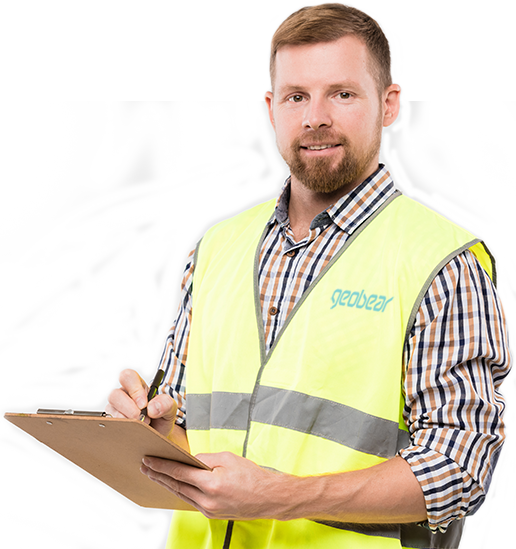
The total cradle to gate service life cycle carbon emissions for both services are shown in the following table. Based on the agreed 60-year scenario, overall, the Geobear Geopolymer Injection has significantly lower emissions when compared to the traditional method.
10 Geobear treatments result in the avoidance of 75.13% of the modelled traditional method’s emissions, this has an overall avoidance of 149,780.2 kgCO2e.





Geobear is based on an average supply distance by sea freight and truck to site.
Fuel emissions in transport and during works based on typical consumption. The precast concrete was modelled as sourced from the Netherlands, with remaining materials from within the UK.


The implementation fuels are higher for the geopolymer solution, over a 60-year period, as a result of the 10 treatments needed.
The fuel use is significantly higher for the traditional method, in the first year, due to the need to remove the concrete rail crossing prior to replacement. However, due to the Geobear treatment being repeated every 6 years, more fuel is required over the 60-year timeframe.

Includes one HGVs and two vans, calculated to include transport to and from site for 1 of Geobear’s treatments.
For the traditional method, an equivalent distance to Geobear’s travel was assumed with two labourer’s vans, one van for the manual tamper, two HGVs (to account for the excavator and vibrating plate compactor), and a rail journey for the ballast profiler.





All terms of use are certified. Copyright. Geobear 2023.